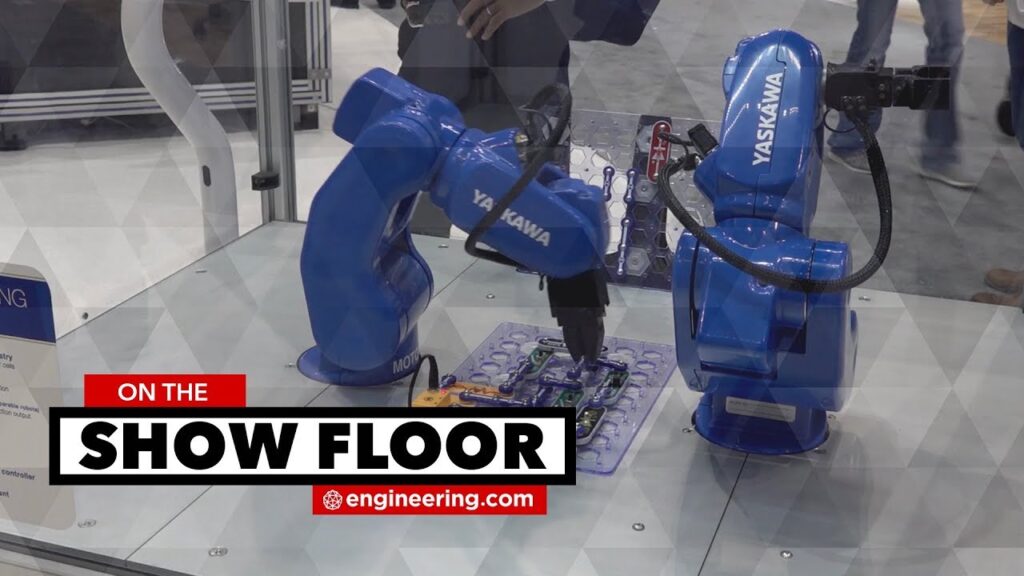**Buy Industrial Robot: Understanding the Costs and Capabilities of Three Robotic Product Offerings**
The world of industrial automation has witnessed significant advancements over the years, revolutionizing the way businesses operate and manufacture. In a bid to enhance efficiency and productivity, companies are increasingly turning to industrial robots. To gain insights into this booming industry, we had the opportunity to speak with Zane Michael at Yaskawa Motoman, who shed light on the costs and capabilities of three robotic product offerings.
When it comes to investing in an industrial robot, one must consider various factors, such as cost, capabilities, and ease of integration. The decision-making process can be overwhelming, but with the right information and guidance, selecting the ideal solution becomes much easier.
At Yaskawa Motoman, they offer a range of robotic product offerings that cater to diverse industrial needs. These products are designed to streamline operations, increase productivity, and deliver a solid return on investment. Let’s dive deeper into the costs and capabilities of three specific robotic solutions.
**1. Robotic Arms for Material Handling:**
The first robotic product offering on our radar is the robotic arm designed explicitly for material handling tasks. These versatile machines are capable of lifting heavy loads, sorting materials, and transferring them with precision. With their nimble movements, they can be integrated seamlessly into existing processes, reducing human error and enhancing overall efficiency.
The cost of these robotic arms varies depending on their payload capacity, reach, and level of complexity. On average, a mid-range robotic arm for material handling can cost anywhere between $30,000 to $80,000. However, it is crucial to note that this cost can fluctuate based on additional customized features and integration requirements.
**2. Welding Robots:**
Welding is a fundamental process in numerous industries, and with advancements in robotic technology, welding robots have become an invaluable asset. These robots are specifically designed with advanced welding capabilities, ensuring consistent precision and quality, while also reducing the risk of workplace injuries. Welding robots can be seamlessly integrated into existing production lines, enhancing productivity and reducing production time.
The cost of a welding robot depends on factors such as the welding technique, complexity of the workpiece, and the required level of automation. On average, a welding robot can range from $50,000 to $150,000. However, it is essential to consider the long-term benefits and potential cost savings associated with increased productivity and reduced scrap rates.
**3. Pick and Place Robots:**
In industries that involve repetitive tasks such as packaging, assembly, or sorting, pick and place robots play a vital role. These robots are equipped with advanced vision systems, enabling them to identify and accurately pick items before placing them in desired locations. By automating these monotonous tasks, businesses can significantly reduce labor costs, eliminate errors, and boost overall efficiency.
The cost of pick and place robots can vary based on their payload capacity, speed, and intricacy of the gripping mechanism. On average, a pick and place robot can range from $20,000 to $50,000. However, it is crucial to evaluate the potential return on investment, considering factors such as increased production speed, reduced errors, and enhanced product quality.
In conclusion, investing in an industrial robot requires careful consideration of costs and capabilities. The three specific robotic product offerings discussed – robotic arms for material handling, welding robots, and pick and place robots – offer unique benefits tailored to various industrial needs. Understanding the costs associated with these solutions is essential, as it enables businesses to make informed decisions based on budget and expected return on investment.
It is worth noting that Yaskawa Motoman’s pre-engineered cell solutions also deserve attention. These pre-engineered cells provide a comprehensive package that includes the robot, peripherals, and integration, significantly reducing the lead time and complexity of implementation. While the upfront cost may be higher compared to individual robot purchases, the pre-engineered cell solution offers a hassle-free implementation process, saving businesses time and effort.
Thus, when deciding to buy an industrial robot, weighing the costs and capabilities of different product offerings, including pre-engineered cells, is crucial. This analysis will ensure that businesses can select the most suitable option that aligns with their specific requirements, budget constraints, and long-term goals. Embracing industrial robots can be the turning point for businesses looking to achieve enhanced efficiency, productivity, and profitability in their operations.
Industrial Robot
“Why Choose a Pre-Engineered Cell: Evaluating Costs and Benefits of Industrial Robots”


